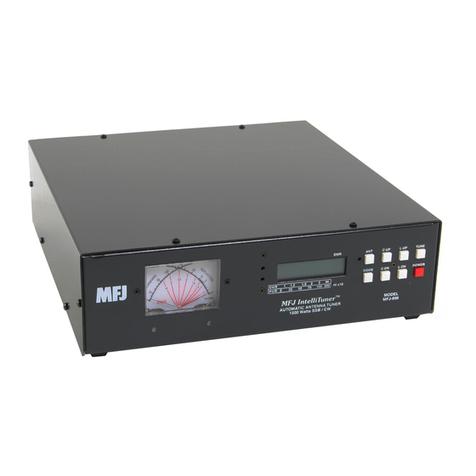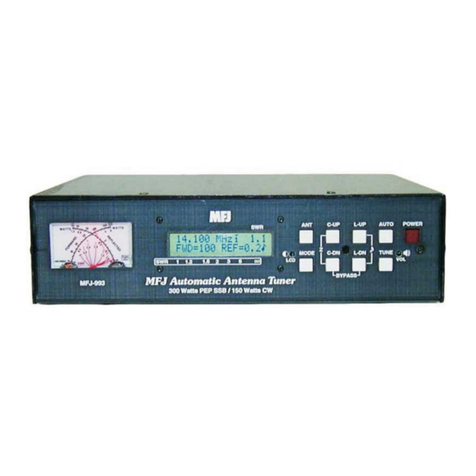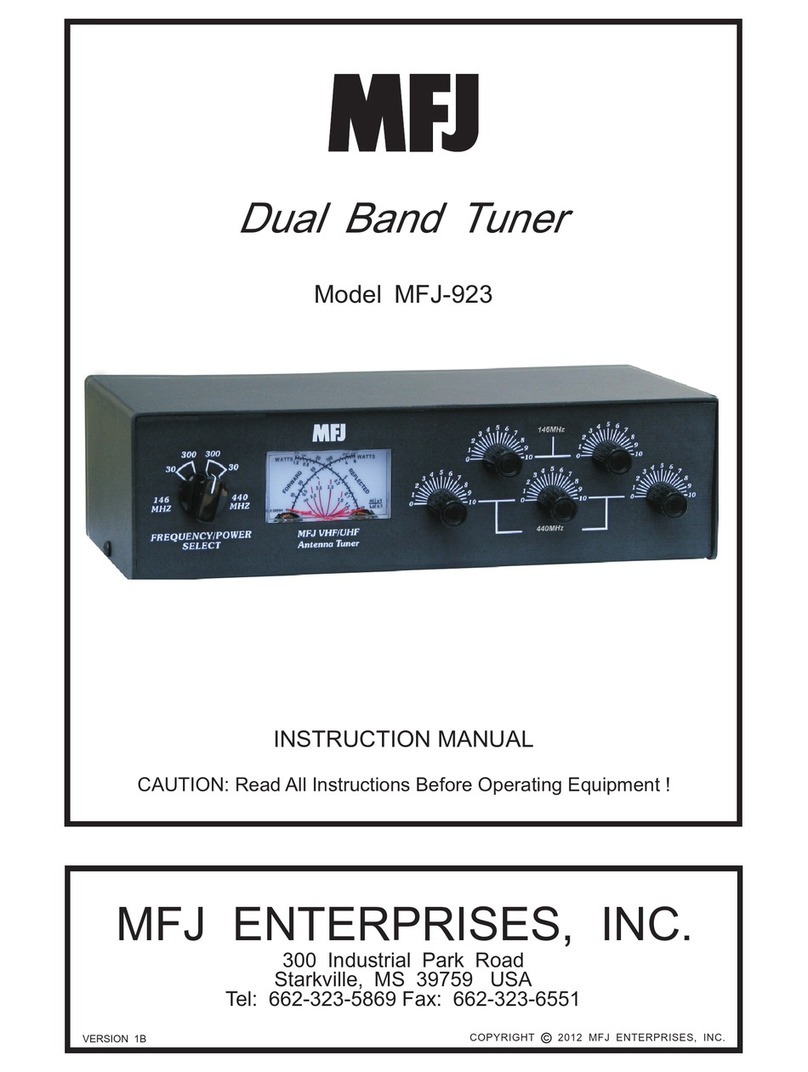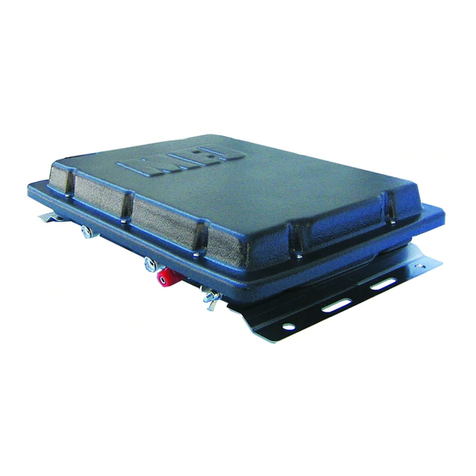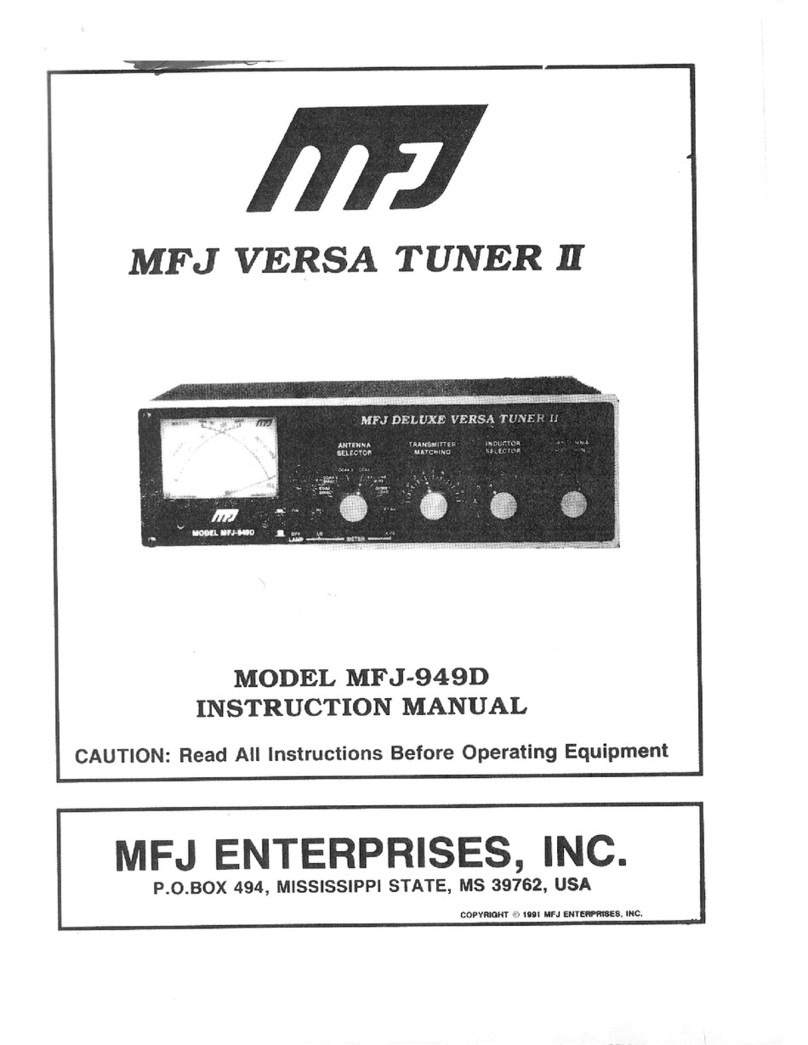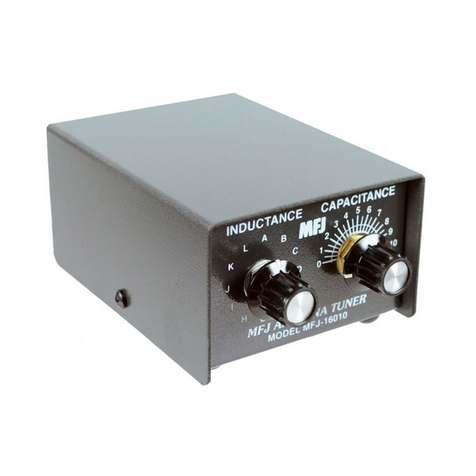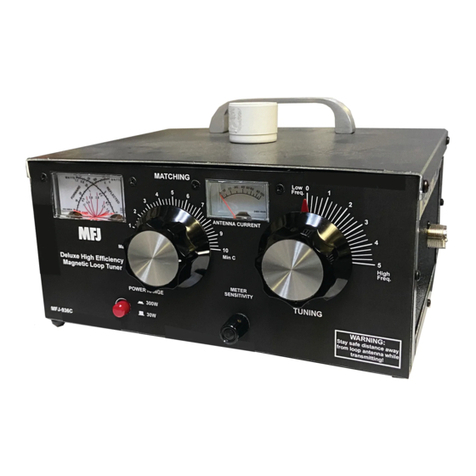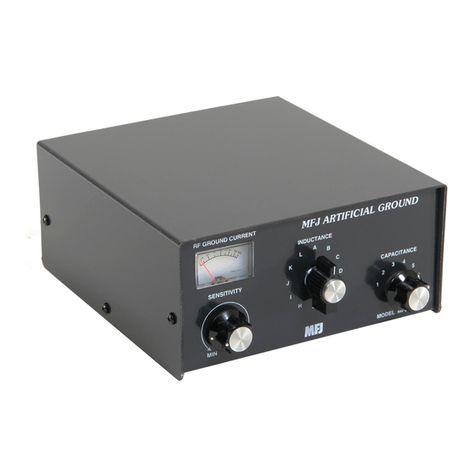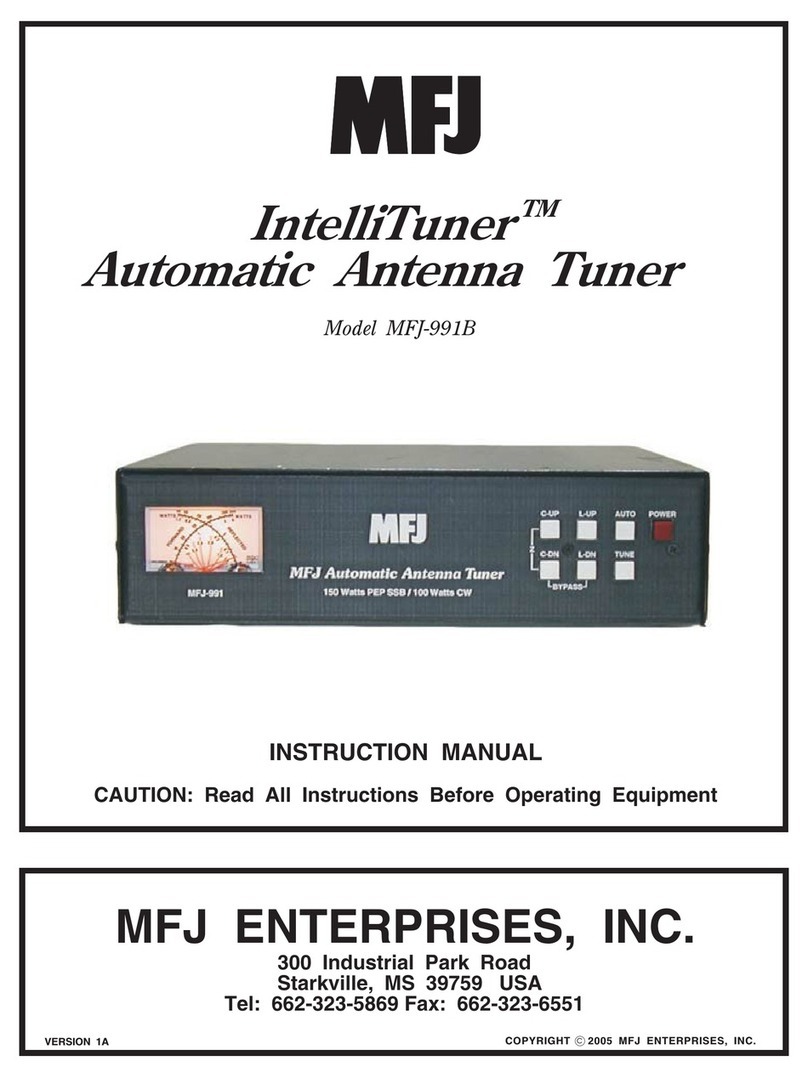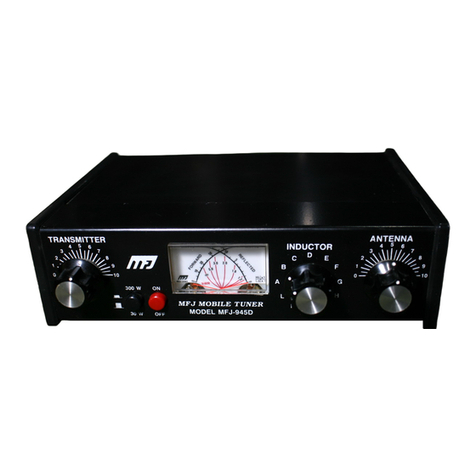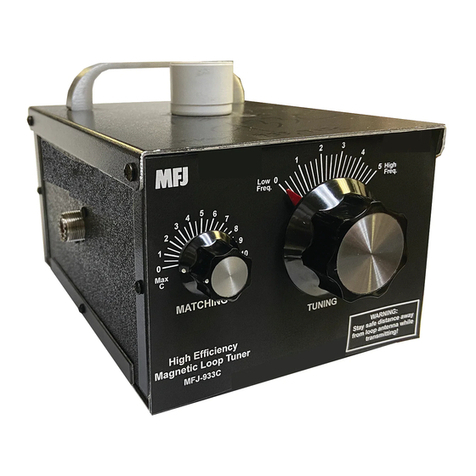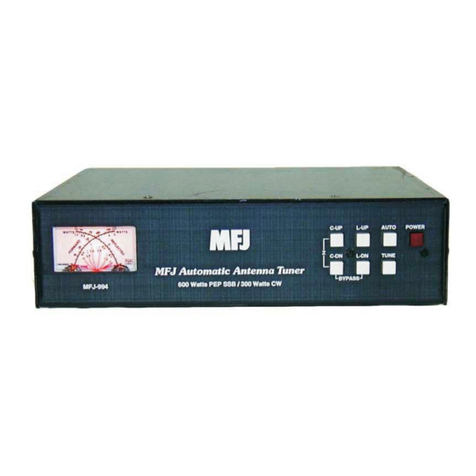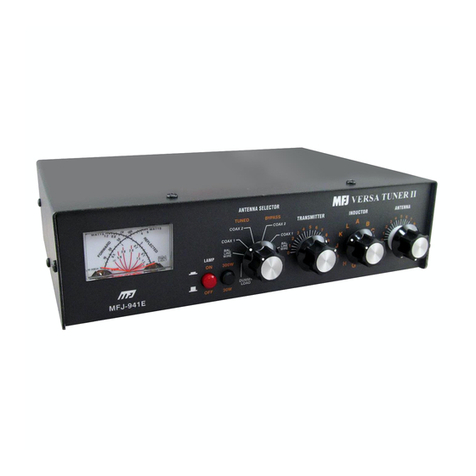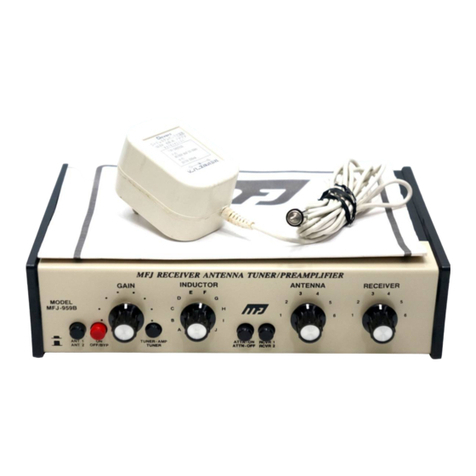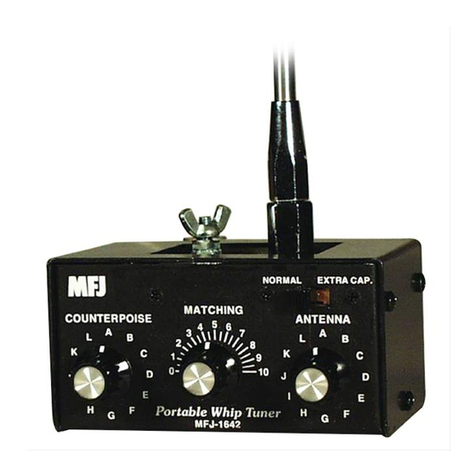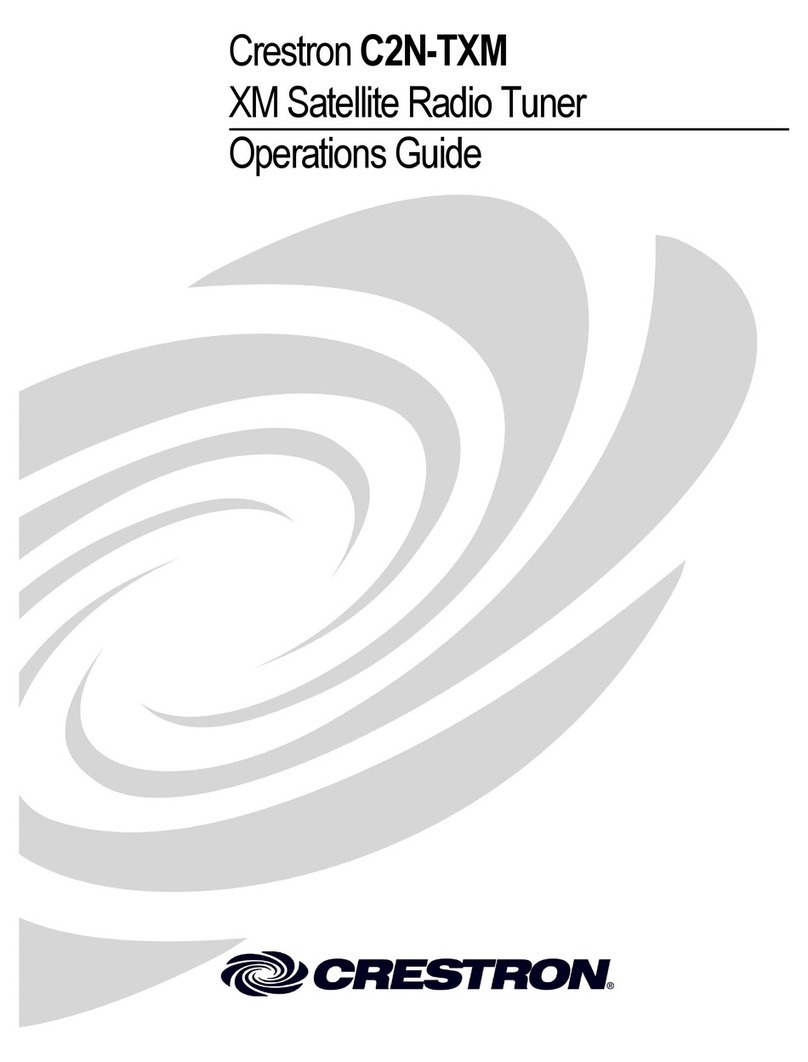
MFJ-991 IntelliTuner Automatic Antenna Tuner Instruction Manual
©2004 MFJ Enterprises, Inc.
1
The Basics
Introduction
The MFJ-991 IntelliTunerTM let you rapidly tune antennas automatically: unbalanced or single-wire (or
balanced, with an external balun).
MFJ's exclusive InstantRecallTM, IntelliTuneTM and AdaptiveSearchTM algorithms give you fast automatic
tuning with more than 1000 non-volatile memories.
The tuner includes a highly efficient switching L-network with wide matching capability, 1.8 to 30 MHz
coverage, cross-needle power meters, a port for an accessory remote control, a radio interface port, and
heavy-duty 16 amp/1000 volt relays. It is rated at 300 watts PEP SSB and 150 watts CW.
256 values of capacitance and 256 values of inductance are available. With the inductance switched
between the input and output side, this provides a total of 131,072 L/C tuning combinations. The nominal
tuning ranges are 0 to 3900 pF and 0 to 24 µH.
All MFJ IntelliTunersTM learn and remember. When you transmit, they automatically adjust for minimum
SWR and remember the frequency and tuner settings, safely stored in non-volatile memory. The next
time you operate on that frequency (or close to it), these tuner settings are instantly restored and you’re
ready to operate in milliseconds. The tuner can learn and remember more than a thousand frequencies
and tuner settings.
When you key your transmitter, MFJ’s InstantRecallTM checks its memory to see if you have operated that
frequency before. If so, tuning is instantaneous and you’re ready to operate. If not, MFJ’s IntelliTuneTM
algorithm (based on MFJ’s famous SWR Analyzer technology) kicks in. It measures the complex
impedance of your antenna. Next, it calculates the components it needs and instantly snaps them in.
Finally, it fine-tunes to minimize SWR, and you’re ready to operate – all in a fraction of a second.
If the antenna impedance is not within the tuner’s measurement range, MFJ’s AdaptiveSearchTM
algorithm goes into action. Frequency is measured and relevant component values are determined. Only
those values are searched for fast tuning. If it still cannot find a match, the search is performed again
using a different search pattern.
The target SWR can be set at 1.5 or 2.0. The minimum power to tune is approximately five watts. You
can manually tune where you can’t transmit (for listening out of ham bands).
The optional MFJ-993RC Remote Control provides most tuner controls, allowing convenient remote
locating of the tuner itself.
All MFJ’s IntelliTunersTM support radio tuner interfaces that are compatible with Icom AH-3 and AH-4
tuners and the Alinco EDX-2 tuner. Optional interface cables MFJ-5124A (for Alinco) and MFJ-5124I
(for Icom) are available from MFJ Enterprises, Inc. Interface cables for compatible Kenwood and Yaesu
radios will be available in the future.
The tuners enter a “sleep” mode when idle and when no transmit signal is present, turning off the
microprocessor clock to avoid the generation of spurious signals.

